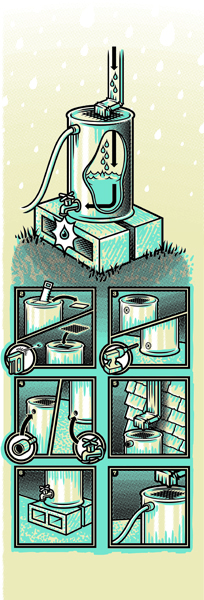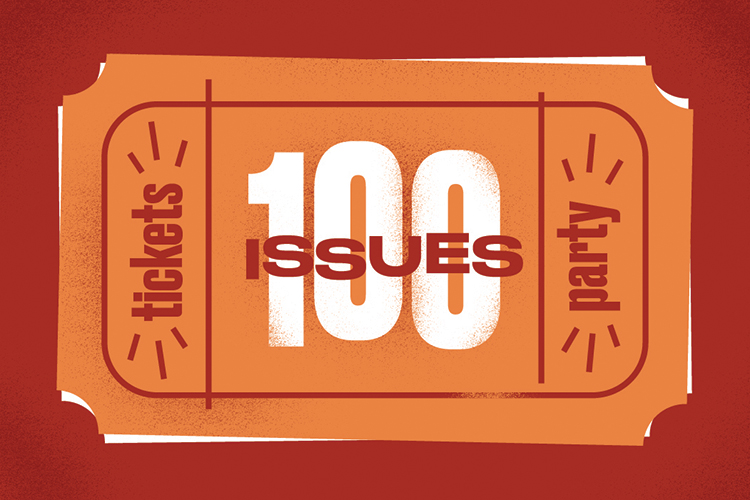 Saving rainwater for your own uses
Saving rainwater for your own uses
by Will Dean
To comply with federal regulations governing combined storm water and sewage overflow (where lots of rain can wash sewage into local watersheds), the Philadelphia Water Department is trying something new. Usually, upgrading the storm water system means lots of new pipes, construction, expense and disruption. This is the “gray” approach. Instead, PWD is looking to nature to turn Philly’s streets “green” and deal with storm water problems in a natural way.
Their Clean Water Green City program seeks to put infrastructure improvements like rain gardens, rain barrels, trees, grass and green roofs (instead of more pipes) in a few model neighborhoods by the end of the year to inspire interest in the rest of the city. The eventual goal is to turn all of Philly literally green, but you can get a head start, and a cheap way to water your garden, by putting in a rain barrel now.
Supplies you will need:
- 3/4-inch hose spigot
- 3/4-inch hose adaptor
- drill
- 29/32-inch drill bit
- Mesh screen
- 2 3/4-inch locknuts
- saber or keyhole saw
- staple gun
- Teflon tape or caulk
- wrench
- 50 gallon plastic barrel
Step-by-step instructions:
- Get a large (approximately 50 gallon) plastic barrel. You can find them used on Craigslist. If you go the used route, make sure it was only used for food storage before and not holding chemicals. Rinse out the barrel thoroughly.
- Use the saw to cut a hole at least six inches wide in the top, and attach the mesh screen (to keep out debris) with the staple gun.
- Drill two holes in the side of the barrel: one an inch from the bottom and one an inch from the top.
- Push the hose spigot into the hole in the bottom and tighten the locknut fully. Then wrap the locknut with Teflon tape or seal it with caulk. Follow the same procedure with the hose adaptor in the top hole.
- Place the rain barrel under the downspout of your gutters, or somewhere that water runs off your roof if you don’t have gutters.
- Elevate the barrel using cinder blocks or a milk crate so it’s easier to attach a hose to the spigot. Attach another hose to the hose adaptor and run it away from your house. (This is to prevent overflow.)
- Water your garden!



